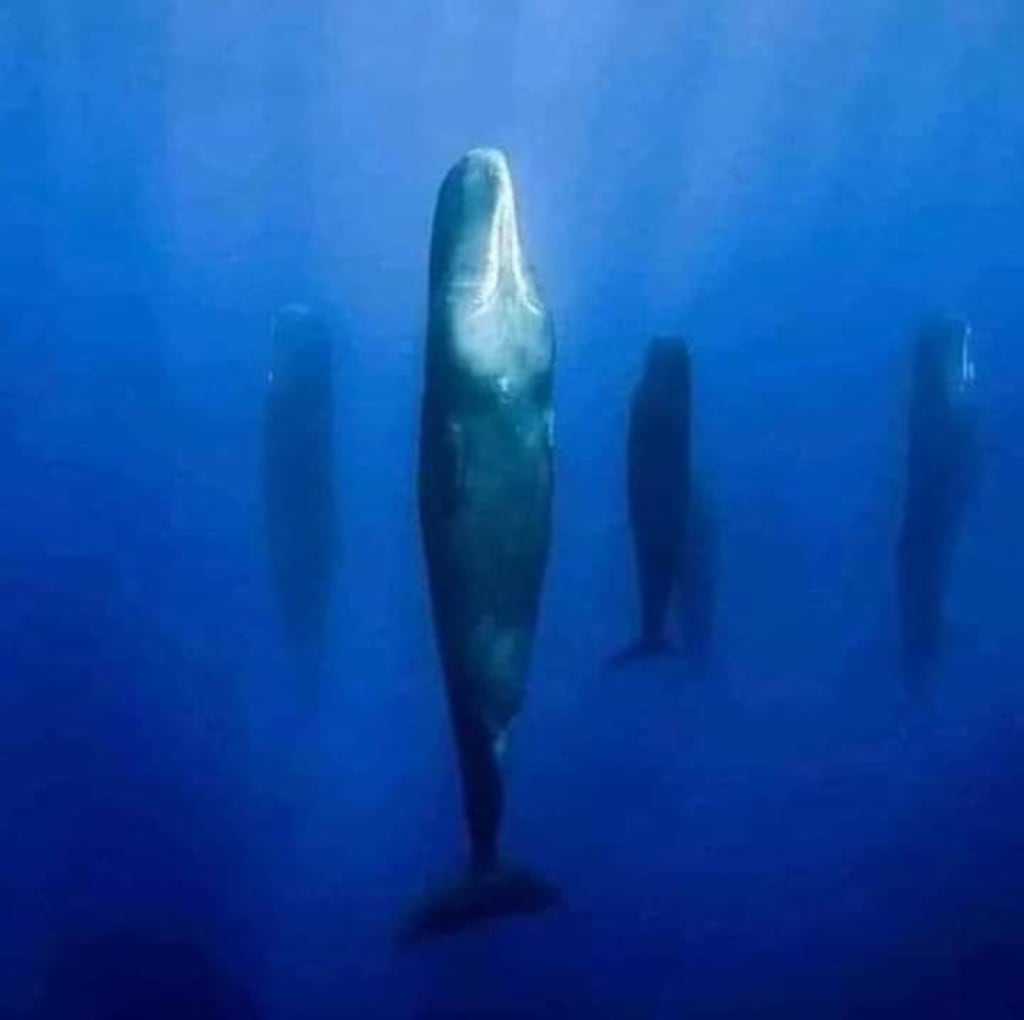The Mysterious Sleep Patterns of Sperm Whales
Sleeping Giant

The ocean, with its vast, uncharted depths, continues to be a source of wonder and mystery. Among the many fascinating creatures that inhabit the sea, sperm whales stand out for their impressive size, complex social structures, and unique behaviors. One of the most intriguing aspects of sperm whale behavior, only recently documented, is their peculiar sleep pattern. These magnificent creatures sleep in a manner unlike any other known mammal: vertically, in deep waters, and in a state of near-perfect stillness. This blog post explores the sleeping habits of sperm whales, shedding light on this fascinating aspect of their lives and the broader implications it holds for our understanding of marine biology.
The Enigmatic Sleep of Sperm Whales
Sperm whales (Physeter macrocephalus) are the largest toothed predators on Earth, renowned for their deep diving abilities and long, haunting vocalizations. Despite being extensively studied, much about their lives remains shrouded in mystery, particularly their sleep patterns. It wasn't until a 2008 study that scientists confirmed the extraordinary way these whales take their rest.
When sperm whales need a nap, they take a deep breath, dive down about 45 feet, and arrange themselves into perfectly level, vertical patterns. They sleep sound and still for up to two hours at a time between breaths, typically in pods of five or six whales. This group sleeping behavior is presumed to offer protection, as there is safety in numbers even for these massive creatures.
Discovery of Vertical Sleeping
The revelation of sperm whale sleeping habits came as a surprise to marine biologists. Prior to the 2008 study, the vertical sleep posture of these whales was unknown. Researchers stumbled upon this behavior almost serendipitously when a team studying sperm whales in the Caribbean observed a group of whales in an unusual vertical position. Initially thinking the whales might be dead or in distress, the scientists soon realized they were merely asleep.
This discovery was documented through a combination of underwater photography and direct observation, capturing images of sperm whales suspended vertically in the water column, their heads pointed towards the surface and tails hanging downward. The whales remained motionless, drifting gently in the currents, a stark contrast to their typically active and dynamic behavior.
The Science of Whale Sleep
Understanding the sleep patterns of sperm whales involves delving into the broader question of how marine mammals manage to rest in an aquatic environment. Unlike terrestrial mammals, which can rest on solid ground, marine mammals must navigate the challenges of sleeping in water, where buoyancy and the need to surface for air complicate the process.
For sperm whales, the solution appears to be a combination of deep, stationary sleep and synchronized breathing. By diving down to about 45 feet, these whales reach a depth where they can remain neutrally buoyant, reducing the energy required to maintain their position. Arranging themselves vertically may help them remain stable and aligned with their pod, minimizing the risk of drifting apart or becoming vulnerable to predators.
Sperm whales, like other marine mammals, engage in unihemispheric slow-wave sleep (USWS), where one hemisphere of the brain remains active while the other rests. This allows them to maintain a level of consciousness necessary to surface for air periodically. During their vertical naps, sperm whales are likely in a deep sleep phase, relying on their group members for protection and mutual awareness.
The Social Structure of Sperm Whale Pods
The social behavior of sperm whales is complex and highly structured. They live in matriarchal groups consisting of females and their young, while adult males often lead more solitary lives, joining pods only for breeding purposes. The tight-knit structure of these pods provides numerous advantages, including cooperative hunting, calf-rearing, and protection from predators like orcas.
Sleeping in pods, as observed in sperm whales, underscores the importance of social bonds and collective behavior. The vertical sleep formation may not only offer protection but also facilitate communication and social cohesion. Even in their most vulnerable state, sperm whales demonstrate a remarkable level of social organization and mutual support.
Implications for Marine Biology and Conservation
The discovery of vertical sleeping in sperm whales adds a new dimension to our understanding of these magnificent creatures and highlights the complexity of marine life. It also raises important questions about the evolutionary adaptations that have enabled sperm whales to thrive in their aquatic environment.
From a conservation perspective, understanding the behavior and ecology of sperm whales is crucial for their protection. These whales face numerous threats, including ship strikes, entanglement in fishing gear, and the impacts of noise pollution. The discovery of their sleep patterns can inform conservation strategies, particularly in areas where human activities overlap with critical habitats.
The Broader Context of Marine Mammal Sleep
Sperm whales are not the only marine mammals with unique sleep behaviors. Dolphins, for example, also engage in unihemispheric slow-wave sleep, allowing them to swim and surface for air while resting. Seals exhibit a range of sleep patterns depending on whether they are on land or in the water. These diverse strategies underscore the adaptability and resilience of marine mammals in navigating the challenges of their environment.
Conclusion
The vertical sleep patterns of sperm whales offer a fascinating glimpse into the lives of these enigmatic giants of the ocean. Their ability to sleep soundly while suspended in deep water, surrounded by their pod, is a testament to their remarkable adaptations and social structure. As we continue to uncover the secrets of the ocean, each new discovery deepens our appreciation for the complexity and beauty of marine life.
Understanding the sleep habits of sperm whales not only enriches our knowledge of marine biology but also highlights the importance of protecting these incredible creatures and their habitats. By fostering a greater awareness of their behaviors and the challenges they face, we can work towards ensuring that sperm whales continue to grace our oceans for generations to come.
About the Creator
Enjoyed the story? Support the Creator.
Subscribe for free to receive all their stories in your feed. You could also pledge your support or give them a one-off tip, letting them know you appreciate their work.






Comments (2)
Hey, just wanna let you know that this is more suitable to be posted in the Earth community 😊
Good one.